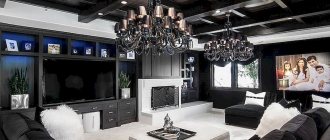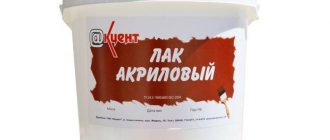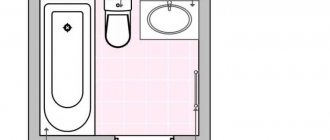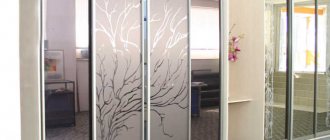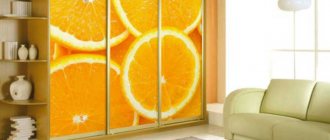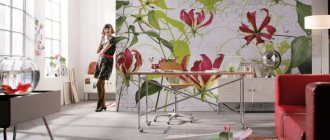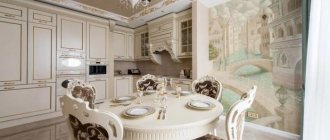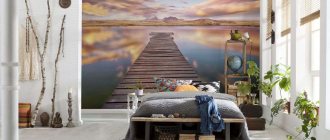Home » Decor » Wall decoration
DecorDesignWall decoration
Anton Teterekov
If we look at authentic frescoes that were created many centuries ago, they could only be done by trained craftsmen. To create a fresco, you need to paint on wet plaster. This process has changed a lot now. Now three-dimensional images can be applied using all kinds of materials and techniques. Everything will be discussed in more detail later in the article.
What do you mean by fresco?
To understand, it makes sense to remember the times when this technology first began to be used as a method of home decoration. Visually, wall painting is similar to frescoes, but in essence they are all different techniques, although in both cases it is the walls that are decorated. For application, only fresh plaster is needed, so in the current conditions it is difficult to repeat the technique .
But there are masters who are able to reproduce even complex landscapes on fresh plaster . The paint used is materials with natural pigments. This allows you to get a rich and bright pattern.
It is not necessary to make a fresco directly on the wall, since the work can first be done on canvas, and only then this canvas can be mounted on the wall.
This option is preferable. If you get tired of the painting, you can easily remove it or move it to another room.
Landscape fresco in the interior
Due to the fact that paints were expensive, and not everyone could complete the work, frescoes were previously used to decorate palaces. You could see them in rich houses. The basis of the paint, in addition to natural pigments, was created by a mixture of sand and lime. After applying paint to a damp surface, it firmly adhered to the wall. A film was placed on top of the image, protecting it for a long time.
Now it is used in ordinary homes, hotels, and restaurants. Often this area is highlighted in a special way. This will make the picture more noticeable.
You can focus attention with the help of artificial lamps.
The peculiarity of the work is speed . The master must complete everything in a day - the lime dries very quickly. Accordingly, making mistakes when creating a picture is impossible. The technology itself denies making any changes. If an error is made, then the entire composition is completely deleted and redone.
A bright accent in the restaurant interior
Peculiarities
This was the classical technique described. But now it has changed a little, as the composition of the paint has become more modern. As for examples of ancient frescoes that have survived to this day, they can be seen in ancient buildings. For example, the famous work The Creation of Adam has been preserved virtually unchanged in the Sistine Chapel. A fresco represents any technique of painting an image on a wall. Any technique and any paints are suitable for this.
There are even wallpapers that imitate a fresco. A limitation for creation may be a mismatch of styles. It may not look good in a modern style room. It is important to guess the theme of the image. For a new style it could be:
- space;
- futuristic motives.
Photo wallpaper with space design
There are special requirements for the premises. There are restrictions on air temperature. Both cold and heat are harmful to frescoes.
When moving, you need to be careful, as they are quite easy to damage. Transportation is carried out in special containers.
When caring for the image, contact with water should be kept to a minimum, unless it has a protective varnish.
Modern interior design
Fresco on canvas
It is also not a cheap or simple technology. Handmade canvas is coated with special compounds and paints based on natural pigments.
Artificial aging is used. The fresco is also covered with special protective agents, and in general this type of fresco requires regular and constant care.
Frescoes on non-woven fabric
In the old days, only one technology was used - applying an image to wet plaster. Now there are much more variations.
Textured on a non-woven basis
Frescoes on non-woven fabric are Italian technology. To create the picture, a non-woven base is used. You can make an image using a special printer.
The peculiarity of this method is that the image will be made in an antique style. To do this, the master applies a special aging solution.
You can add several decades to a painting by forming microcracks - the so-called craquelure. Cracks can be either strengthened or abandoned altogether. For one square meter of painting they can ask for about 15 thousand rubles. The non-woven sheet is attached like regular wallpaper. There are no special installation secrets here. There is a special glue just for non-woven wallpaper.
With craquelure effect
It is especially good to use such wallpaper for large surfaces. The absence of joints makes connecting individual parts simple. The picture itself turns out to be complete.
The peculiarity is the use of only natural materials. Vegetable glue, sand, lime, pigments.
The work can be quite expensive, since it is done only manually, and at all stages. First, a plaster base is created. After creating the base, the image is applied.
As in the previous case, this image must be aged before it hits the canvas. The uniqueness of the method is that it can be performed by craftsmen from Spain or Italy. Exclusive or large frescoes will take a long time to complete and will cost a lot of money.
Decoration of interfloor space - expensive and stylish
Finished products are sold in roll form or on a stretcher. Heavy wallpaper glue is required for gluing. The excess canvas is trimmed off at the edges before the plaster is applied and the wall is leveled. The painting must be covered with wax. It should not be touched due to its fragility. It also cannot be washed with water.
Technological features of other types
Tiger in the living room interior
As for the self-adhesive base, it is a non-woven fabric. An image is applied to this canvas using sand paste. The image is created and applied digitally. After removing the protective layer, it is simply glued to the wall. The master can combine such frescoes with paints, wallpaper and other finishing materials.
In addition to walls, you can also decorate ceilings. Since the layer of plaster is thin, you need to level the surface in advance. This will not be able to hide large flaws in the wall. In this case, the effect of antiquity is not observed due to the thin layer of plaster.
Interior with ceiling painting
For frescoes on a rigid base, the base is created from:
- wood;
- ceramics;
- polymer.
The base, despite its rigidity, is lightweight. To emphasize the antiquity of the work, it is customary to make artistic chips on the edges. Mounted both as paintings and as wallpaper. There is a strict size limitation, since it cannot be larger than 3x1.4 meters.
The most preferable option is to create an image on elastic plaster. Elasticity is imparted to the plaster using a special Italian technology. The presence of a mounting mesh is required to ensure that the product does not crack when bent. The image is applied using modern printing technologies and harmless inks.
Frescoes on elastic plaster allow you to most accurately recreate ancient works.
On elastic decorative plaster
The layer of plaster is large, and due to this it is possible to create relief and texture of the image. Plaster is placed around the painting, which creates the impression of a painting painted on the wall. The fresco can be washed with water, as it is not afraid of moisture. Similar ones can be seen not only on the walls, but also on the facades. They are glued with any mounting adhesive.
Intraspecific features
Classic version
The basis for the drawing is sand and slaked lime. Paints must be applied quickly and clearly, without waiting for drying.
This process is quite labor-intensive and costly. Therefore, customers more often resort to alternative options.
Elastic plaster
This material perfectly replaces lime mixture. Modern components allow the solution to remain damp a little longer. To increase the strength of the thin layer, a reinforcing mesh is used. Otherwise, the result of the work depends on the talent of the brush master.
Canvas
This option involves pre-fixing the base to plastered walls or ceilings. After this, it is primed and the drawing begins. At the customer's request, the coating is additionally aged. The result is original, but fragile. To eliminate the hydrophobia of natural paints, a wax-based composition is applied on top.
Factory fresco on plaster base
In this case, a solution and a reinforcing mesh are used, but the print is applied under special factory conditions. The finished product is attached to the wall using adhesives recommended by the manufacturer. The edges of the fresco can be treated with plaster mortar to give the element a natural look.
The advantages of the product are:
- proximity to the historical analogue;
- affordable price;
- durability;
- resistance to ultraviolet radiation and variable humidity.
Nonwoven
The cellulose fabric is covered with a thin layer of elastic plaster. A drawing is applied to the resulting base using a printer. The result may be artificially aged. The final stage of production is the treatment of the product with special impregnations.
As for installation work, this type of fresco is glued to the wall like heavy non-woven wallpaper. The composition used is appropriate. The positive points are:
- relatively low cost;
- minimum requirements for wall preparation;
- you can cover the surface with your own hands without involving professionals;
- a large selection of finished products relative to the design.
Self-adhesive murals
The most budget option for decoration. The bottom line is that an adhesive composition is first applied to the finished canvas on the reverse side. For installation, it is enough to gradually remove the protective coating in the form of a film and smooth out the product. Unlike cheap analogues, the front part of the product contains purified river sand, which gives the coating texture. To obtain a high-quality result, the walls must be prepared carefully, since this fresco cannot visually hide wall defects.
Hard base
Acrylic paints are applied to prepared panels of various shapes made of mineral, wood or PVC materials. The coating can be aged directly on site. Installation can be done using liquid nails. Alternatively, the mural can be hung like a painting.
It is worth noting that the product turns out to be heavy, so its dimensions rarely exceed the parameters 3x1.5 m.
What to choose between a fresco and photo wallpaper? Is there a compromise?
It is this question that arouses increased interest among those who want to decorate their interior and make it unusual. In both cases, it will be possible to liven up the situation. The dimensions, like the wallpaper, are impressive, so the listed materials can be roughly classified into one category. But the effect of using these materials is different. If the fresco is a large-scale image painted, then the wallpaper is simpler and cheaper. The image is created from individual fragments of wallpaper.
The process of gluing photo wallpaper
To understand the differences, you need to understand the process. Initially, the technique involved applying paint to still-damp plaster. Nowadays such work is carried out less frequently.
But if the customer chooses to apply paint to wet plaster, then the final work will be called a pure fresco.
But painting on a dry layer of texture can be considered the same fresco.
Application is considered a more creative activity than wallpapering. And in other indicators they are ahead.
There are reasons for this:
- In the first case, the artist tries to reproduce the plot that the customer liked. In this regard, the artist has a lot of room for imagination, since he can remove elements or add something of his own. It is this approach that allows you to decorate the interior.
- We must not forget that wallpaper is produced automatically, while fresco is purely handmade. Handmade work is valued and paid more. But handmade does not mean that the fresco will quickly become unusable.
- A characteristic advantage of frescoes is their durability. Wallpaper is not so durable - it has a degree of wear resistance. Wallpaper has a paper base, which immediately puts forward a number of requirements for the working surface and the room as a whole. The walls should be perfectly smooth, and the room should not be too humid. Wallpaper can be with a textured vinyl coating. Vinyl gives wallpaper more durability. But wallpaper cannot compete with frescoes in this indicator. If we consider the most durable wallpaper, then these are non-woven models.
In the modern interior of the dining room
Non-woven wallpaper can be purchased immediately, knowing the parameters, but most often they are made individually to order. After covering with a layer of plaster, the wallpaper begins to resemble a fresco. They have a clear bias in terms of average price. A more affordable option in terms of money is to buy photo wallpaper.
Antique style painting
You can go even further and purchase the cheapest paper photo wallpaper. Due to its fragility, this should only be done if financial capabilities are severely limited. You can also find a cheap option, since the cost is determined by the degree of artist’s skill.
Office with paper photo wallpaper
Advantages
- If the goal is to give the interior an antique style, then modern printing methods make it possible to achieve almost complete authenticity.
- There is no problem in finding a suitable painting for yourself.
- You can choose either a ready-made solution or an individual order.
- If the task is to visually increase the space, then for this you can choose one with the desired image.
- Some types of frescoes can be cleaned using detergents.
- They can be used not only on walls, but also on the ceiling.
- There is no problem in transferring a complex image to the wall. Modern digital technologies are used for printing.
- The picture will not deteriorate over time.
Original living room design
Fresco and its types
A fresco is a drawing that is applied with water paints to wet plaster. The first records about it were made before our era. Nowadays, a lot has changed in the application and creation of frescoes.
Now it is applied to the surface of the wall using special equipment and some materials.
There are several types of frescoes:
Fresco on plaster is a plastic substance that is not afraid of water and sun rays. A special mesh is used to apply it, which helps maintain the quality of the design for a long time. This type of fresco can be applied to absolutely any surface.
Fresco on non-woven fabric is a special plaster that resembles wallpaper in its appearance. Very popular for use in the living room. Can take on an antique effect using a technology called “craquelure”.
Adhesive mural. It is used on a flat surface and is characterized by ease of application.
Fresco on canvas. This type is made exclusively by professional artists at a very high price.
Most popular images
It all depends on the environment. A popular move is when one of the famous paintings is used. Such reproductions are usually transferred to the entire wall. As for classical images, their quality can be an antique or religious subject. For ancient interiors, any scene from the life of those times is chosen.
Reproduction of Michelangelo's painting “The Creation of Adam”
When using abstract designs, the color chosen matters. It's cheaper than the classic method. Abstraction is performed using a stencil. If you need to solve the problem of gloominess in a room, then it can be done with a floral design. Here it is better to use images of fragrant gardens, especially if the windows of the room face north.
An image of large inflorescences can correct the shortcomings of a room with low ceilings . Landscapes are also popular. The option is universal, as it can be seamlessly integrated into any interior. It gives a certain atmosphere of freshness and freedom. This category will include images of meadows, wildlife, and beaches. A good technique is to use false windows, from which an unusual view will open.
"Blooming rose on the window"
You can transfer an image of a famous person to the wall. You can choose an actor, dancer or musician, the main thing is that being in the room is justified. Stories are no less popular. It doesn't matter where the plot comes from.
The point is to be transported back to that time, to experience the situation yourself.
All of the listed types of images are suitable for an interior originally decorated in an antique style. For example, in such rooms they can be framed with a golden frame to give the picture a palace style. Copies of paintings by famous artists can be used as the image itself. But even if the style of the room has nothing to do with classicism or gothic, it can still be included.
Bedroom interior in palace style
For the minimalist style, urban images can be selected. An African-style room can have portraits of African girls. When using loft style indoors, you can choose graffiti.
When choosing an image from a catalog, it is important to clarify whether edits are required. A specialist can change the location of the picture, replace some shades, focus on the necessary elements, or remove unnecessary details. Your own photographs can also be used as images. To create such a picture, you must first perform computer visualization.
Latest trends in creation
It’s not a problem to fit it into an already established interior style.
It all depends on the correct choice of the theme of the drawing.
World map in the nursery interior
For a romantic style, pastel colors and flower images are preferred. Minimalism requires the depiction of abstraction so that graphic details are as clear as possible. You can resort to popular Italian motifs. To do this, it is important to make the frame with natural stone. You can use sandstone of a golden hue, although artificial stone similar to light marble is also suitable. In addition to the wall, it can also be placed on the ceiling.
Ceiling fresco
Terms of use
- Large compositions only look good in a spacious apartment.
- The presence of low ceilings will make the atmosphere burdensome, so the room needs to be “stretched out” with frescoes.
- It is very important not to overdo it with details and not to add unnecessary elements to the composition.
- There is no need to mix elements that have nothing in common with each other. For example, a bad decision would be to depict ancient characters against an inappropriate modern background.
Variety of styles
It is better to limit yourself to just one artistic element, around which you can later build a composition.
Fresco on the wall in a classic interior
For the Italian style you need to use antique ones. They are large in size. If the parameters of the room and furniture do not correspond to these dimensions, then it is better to choose a different style.
The alternative is modern modernism. In Art Nouveau there are many different options for frescoes. If you start from modern interiors, then they stand out with clear details. All details should be visible in the composition, preferably they should be convex. You need to achieve the effect of manifestation on the wall .
Modern fresco in the bedroom
These are equally suitable for minimalism and modernism. But in compact rooms it is better not to use three-dimensional drawings. They will be difficult to perceive visually.
There are some tricks for compact spaces:
- The presence of a large window allows you to visually increase the space. Nothing prevents you from making the view from the window in the form of a fresco. An alternative is an open world landscape.
- If the room has a narrow corridor, then it can be made lighter by painting a fresco that imitates a window.
- To enhance this effect, you should add illumination. Diffused lighting must be installed. It should be placed on the sides or bottom.
- For narrow and dark rooms it is worth using a suite of arches. It is important that the background has a view of either the garden or the sea.
- You can create the illusion of an antique fireplace.
A light landscape on the wall can visually enlarge the room
You just can’t portray something like this. The room should have a design thought out to the smallest detail. Textiles must have a certain texture. The furniture should be antique. The same goes for lamps and other items.
There is also a classic technique with the image of the sky on the ceiling. This technique is not suitable for everyone. Judging by the reviews, after a while this starts to irritate. The presence of blue skies creates an imbalance in the biological clock. The normal sense of time is disrupted. Therefore, you need to think a lot before making it in the form of the sky.
Fresco on the ceiling in the form of the sky
Features of modern frescoes
Fresco is a wall style of painting. To create a unique pattern, the surface is specially prepared, and the pattern is created by hand by the artist. Carrying out such masterpieces requires not only painting skills and inspiration, but also great patience. This is labor-intensive work that requires a lot of time and effort.
Modern manufacturers of finishing materials have not ignored the growing interest of consumers in this decor. Nowadays, in order to create a fresco on the wall in the kitchen or living room, it is not necessary to invite a professional artist. The market's assortment includes self-adhesive materials that everyone can handle.
Anyone can handle self-adhesive frescoes
Those who want to include a fresco in the interior of the kitchen, to ensure its uniqueness, have the opportunity to choose an application technology, on which the aesthetic indicators and image properties depend. The basis can be
- plaster,
- canvas,
- hard surface,
- non-woven wallpaper.
The fresco will provide uniqueness to the kitchen interior
When choosing a type, you need to take into account financial capabilities. Frescoes made on different types of materials differ significantly in price.
Recommendations for a small living room
A fresco can add missing elements to a room. The room can be visually extended, or vice versa – narrowed. To stretch ceilings vertically, you need to use designs with long objects. These could be high-rise buildings or tall trees. Will fit :
- heaven;
- bridges;
- stone vaults.
The room will be extended by a fresco that smoothly passes from the wall to the ceiling. The emphasis here is on blurring the border.
The tree in the fresco continues from the wall to the ceiling
Compact rooms do not go well with bright frescoes. The bright colors of the element give the effect of presence, which in this case is inappropriate. Elements that are too large are also inappropriate. It is better to focus on light colors in the composition . Frescoes with perspective look organic in small spaces. The perspective is a path or road going into the distance, a seashore.
If there is an acute lack of space in the room, and there are also problems with lighting, then it is better to do it in warm colors. This step will give the room a certain softness and volume. An orange tint will add coziness to the room.
Japanese style painting
Frescoes can also be used to highlight a certain area if the room is large.
Tips for decorating your living room with frescoes
Modern technologies for creating frescoes will help not only to decorate a room in a stylish and unusual way, but will also add missing elements to the interior, for example, height or space. There are several tips for choosing the right frescoes:
- Frescoes with a pattern located vertically will visually raise the ceilings, for example, paintings with tall buildings, flowers on long stems. For the same purpose, images of stone vaults, bridges and skies are used.
- Another way to increase the height of the living room with the help of frescoes would be an image that smoothly flows from the wall, erasing the border, to the ceiling.
- For small rooms, bright images are not used, because some colors can create a visual feeling of proximity of objects. In this case, frescoes with large drawings will also be a bad choice.
- For rooms with limited space, frescoes in light colors are applied. Images with a perspective will look ideal: a path, a road going into the distance, a forest clearing, a sea coast or a cozy courtyard that looks like an extension of your room.
- A darkened room with little lighting will benefit from canvases with warm tones and texture, which will give the images softness and volume. And for a cozy and homely atmosphere, yellow-orange shades are better suited.
Important! Frescoes are also used to zone the space of large rooms. A small image in the living room combined with the kitchen will help to unobtrusively highlight one of the zones.
A modern fresco is a slightly exaggerated, but very stylish interior decoration. It can be used as the main background of the room or serve as a separate part of the design. It will make any living room unique, giving it an original look and individual character. You can see what the frescoes on the walls in the living room interior look like in the photo.
What can you use in the kitchen?
The fresco allows you to turn your work space into a cozy place. The kitchen stands alone, but it uses the usual styles of creating frescoes. The classic style is also suitable, the most necessary. What's important here is:
- simplicity of lines;
- stucco;
- expensive materials;
- clear forms.
In the kitchen you can depict:
- French and Italian paintings;
- mosaic;
- antique painting.
Images of mythological heroes or suggestive still lifes are suitable.
Landscape mural in the kitchen
You can also resort to original painting, if you have an artist in mind, for painting on plaster. Styles like minimalism or hi-tech are considered more masculine. All signs of style indicate that a masculine character predominates here. It is expressed as follows:
- Non-trivial wall decor, roughness, strict lines, predominance of dark colors. A fresco should be created to match the listed characteristics.
- Using computer graphics, you can simulate a complex mosaic or other structural image. Three-dimensional drawings are welcome. The brighter the pictures, the better.
- The tone of the style includes not only avant-garde images, but also more modern elements. For example, these could be complex mechanisms or monochrome drawings.
Fresco with poppies in kitchen design
The Provence style is considered more feminine. It is characterized by creating a cozy home environment. This also includes country style. To create a style, use rough plaster. You also need to stick to rough stonework. A combination of cold tones is welcome.
Provence is slightly different from country, since the color scheme of Provence should be dominated by more delicate shades. As for frescoes, they should be small in size. You can depict motifs from European architecture or landscape.
Kitchen in Provence style
There is also an ethno-style, which has traditional decorative elements. For Russia, this could be Petrikov painting; Ukrainian motifs are also close. It is not necessary to transfer exactly the motives of your country. Bright and interesting things can be found in other countries.
Japanese and Chinese motifs are often borrowed. You can focus on an image of a landscape or flower arrangement.
Typical elements of Japanese style:
- cranes;
- sakura;
- bamboo.
For modern kitchens, the Egyptian direction is also in demand. You need to use canonical painting along with light splashes of gold. The tones should resemble sand, so it should be a warm tone.
African motifs, in which Moroccan style is also felt, can whet your appetite. You can use both traditional art and depict African savannahs.
African style design elements
Features of frescoes in children's rooms
For a children's room, the child's comfort and safety come to the fore. When choosing frescoes for a children's room, you need to make sure that the materials used are safe. They must be sufficiently reliable and wear-resistant. You need to choose the option that will allow you to wash them.
If the selected material meets the criteria, then you can select an image. You can transfer a cartoon character, a plot from a fairy tale, a weather or natural phenomenon, or a funny animal to the wall.
Fresco for children's room
It is especially important to guess with the color palette:
- Pastel colors will help calm the child - they create an atmosphere of comfort.
- Green color invigorates and improves mood.
- Blue and cyan colors help relieve tension - if a child is hyperactive, it is better to do it in the indicated tones.
- Yellow colors have a positive effect on mental activity.
An abundance of bright colors will add vivacity and mood.
As for red, it can also be present in a children's room. But since the properties of red color can act ambiguously, you need to be careful. The red color keeps you in good shape and gives you a surge of strength, but for a small child this may be unnecessary.
You need to make sure that it has a varnish coating. It will protect against accidental damage or scratches. Also, the presence of the coating will allow you to perform wet cleaning.
Printing paintings and photographs on canvas
Frescoes on canvas are considered the most complex and expensive.
A relatively new direction is the transfer of images to canvas. Both ordinary pictures or photographs and famous paintings can be used as an image. Modern technologies transfer any image to the wall. The main thing is to choose a high-quality image with high resolution . Once the original image has been selected, you can select a method to enhance the mural.
The appearance of the fresco can be improved if an imitation of oil painting is performed. The painting is coated with gel, which changes the very structure of the canvas. If desired, the master can finish drawing individual details or add something of his own. Once the necessary touches have been made, all that remains is to coat the canvas with varnish. This will help preserve the canvas for as long as possible.
Even the toilet room can be decorated with a fresco on a stretcher
The created canvas is stretched on a stretcher and then hung on the wall. The size of the canvas depends on the size of the painting. As mentioned earlier, compact spaces require a special approach. If the parameters of the room allow, then you can create panels from individual frescoes. Several frescoes are placed next to each other. The result of the work will be a modular composition.
It is important that the panel does not block anything, in particular, lamps or furniture. It would be better if this area is additionally illuminated.
VIDEO: Examples of frescoes for your interior
Classic examples of frescoes
Design ideas
Wall fresco based on plaster
Production and delivery
In order to order murals on the wall using photo wallpaper, you need to know the dimensions of the panel and decide on the base material on which the digital image will be applied. You can make calculations yourself using the catalog of our online store or use the support of a consultant.
Delivery options offered will depend on your location. Regardless of whether you decide to use the services of our craftsmen or do the pasting yourself, the finished order will include detailed instructions for carrying out the process. This information is also available on our website online and for download in two formats.
Each photo panel is packed in film and a cardboard tube for free. Payment is made upon receipt of the order. If you have not found a suitable image in our catalog, we can produce an individual project according to the client’s sketches.
